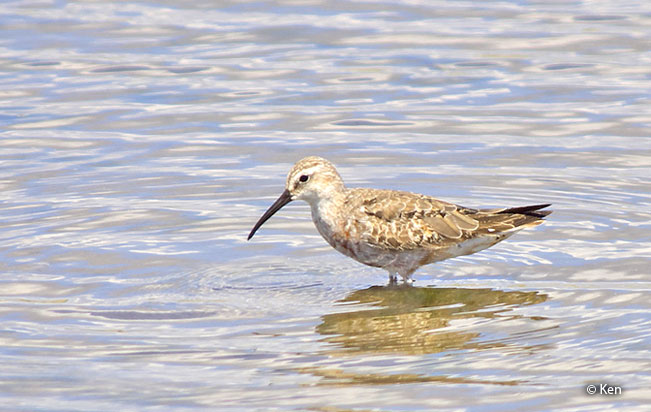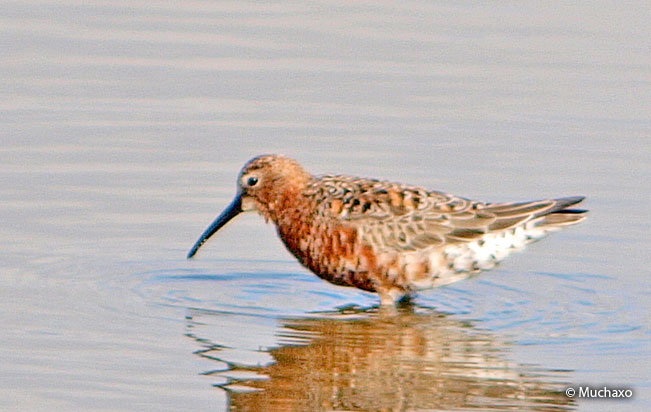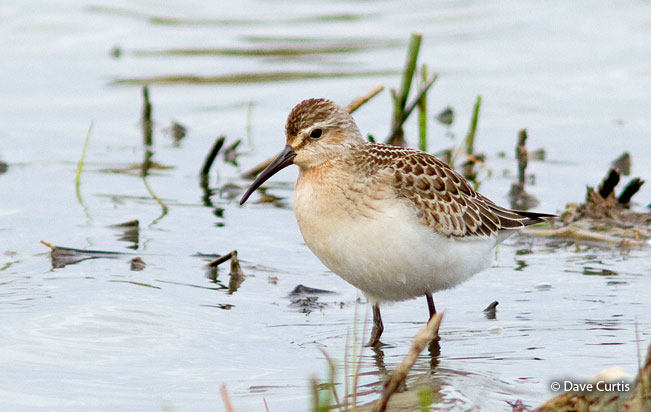Order: Charadriiformes | Family: Scolopacidae | IUCN Status: Least Concern

Age: Adult, basic Plumage | Sex: Unknown | Loc. No Data

Age: Adult, Alternate Plumage | Sex: Unknown | Loc. No Data

Age: Adult, Alternate Plumage | Sex: Unknown | Loc. No Data

Age: Adult, basic Plumage | Sex: Unknown | Loc. No Data
Identification & Behavior: ~20 cm (7.8 in). The Curlew Sandpiper in basic plumage is brownish-gray with a pale belly. It shows a broad and pale eyebrow or superciliary line. The alternate plumage is a rich-rusty or brick-red. When molting it show a mottled belly. It has a long, relatively thin and dropping bill. It is similar to the Dunlin in basic plumage, but these two species are considered rare vagrants in Peru and are highly unlikely to be observed in this part of South America.
Status: The Curlew Sandpiper is a rare vagrant species to the coast of Peru where at least one specimen has been collected. It also occurs in Ec.
Name in Spanish: Playero Zarapito.
Sub-species: Curlew Sandpiper (Calidris ferruginea), Pontopiddan 1763.
Meaning of Name: Calidris: Gr. kalidris, skalidris= shorebird the color of ash mentioned by Aristotle. ferruginea: L. Rusty.
Distribution Map
 Voice
Voice
 Voice
VoiceReferences:
-
- Species range based on: Schulenberg, T. S., D. F. Stotz, and L. Rico. 2006. Distribution maps of the birds of Peru, version 1.0. Environment, Culture & Conservation (ECCo). The Field Museum. http://fm2.fieldmuseum.org/uw_test/birdsofperu on 01/01/2015.